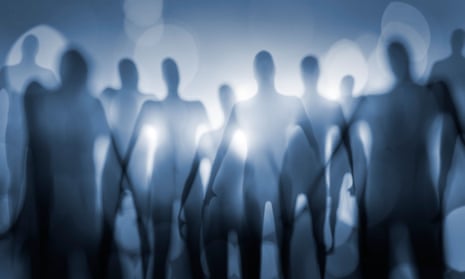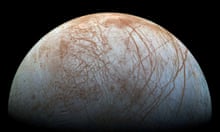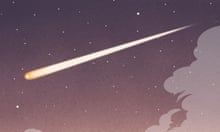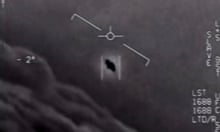Aliens could be everywhere. There are at least 100bn planets in our galaxy alone, and at least 20% of them could be habitable. Even if a tiny fraction of those planets – less than 1% of 1% – evolved life, there would still be tens of thousands of planets with aliens in our vicinity. But if we want to figure out where to start looking for these neighbours, we need to understand what they might be like and where they might thrive.
Ultimately, we want to understand as much as possible about an extraterrestrial species before we encounter it. Yet making predictions about aliens is hard because we have only one example – life on Earth – to extrapolate from. Just because eyes and limbs have evolved many times on Earth doesn’t mean they will appear even once elsewhere. Just because we are made of carbon and coded by DNA doesn’t mean aliens will be – they could be silicon based and coded by “XNA”.
However, as my colleagues and I argue in our new study, published in the International Journal of Astrobiology, there is another approach to making predictions about aliens that gets around this problem: using evolutionary theory as a guiding principle. The theory of natural selection allows us to make predictions that don’t depend on the details of Earth and will hold even for eyeless, nitrogen-breathing aliens.
Darwin formulated his theory of natural selection long before we knew what DNA was, how mutations appeared, or even how traits were passed on. It is remarkably simple and requires just a few ingredients to work: variation (some giraffes have longer necks than others), heritability of that variation (long-necked giraffes have long-necked babies) and differential success linked to the variation (long-necked giraffes eat more leaves and have more babies).
In our paper, we use evolutionary theory to make a number of predictions about aliens. We argue that aliens will undergo natural selection. This is something often taken for granted or assumed to be an unknown. We show that there are firm theoretical grounds for believing that aliens will undergo (or have undergone) natural selection.
This is because “apparent design” is what sets life apart from non-life – such as a single-celled organism from inert rocks. Living things have many intricate parts that are fine-tuned for the common purpose of replicating the organism. The only way to achieve this apparent design, or adaptedness, the only way to get life, is through natural selection.
So, as aliens are highly likely to undergo natural selection, we can make some predictions about what they will be like. In particular, our predictions are about complex aliens. By complexity we mean anything more complex than, say, a virus.
Even a bacterial cell has intricate parts that work together to achieve goals, like moving and eating. In other words, most aliens we would be interested in finding, or be able to find, are complex. That’s because the only things so simple that they could have arisen without natural selection would be molecules, which are physically hard to detect or to distinguish from the background of inert molecules. They would also be transient: without natural selection making them fitter they would disappear. Even if we did find them, we probably wouldn’t even classify them as life.
Complexity on Earth has arisen through a handful of “major transitions in individuality”. These occur when independent organisms come together to form a new type of individual. On Earth, genes came together to form genomes, single-celled organisms formed multicellular organisms, like us. In some rare cases, multicellular organisms, like insects, have formed societies that act as “super organisms”. These events are rare, and require extreme evolutionary conditions.
We argue that complex aliens will have undergone major transitions too, as this is probably the only way to advance beyond a simple replicating molecule. The conditions for major transitions to occur are rare, and are quite well understood from an evolutionary perspective, allowing us to say something about the makeup of aliens.
In particular, just as you and I are made up of cells, which are made up of nuclei and mitochondria (the breathing engine of the cell), which are made up of genes, aliens will be a similar nested hierarchy of units. Aliens might not be made of cells as we think of them, but they will be made up of parts that were once free living, and those parts will be too – all the way down to aliens’ hereditary material (whatever it is). Our parts have mechanisms in place that keep all the parts working together to make an organism.
For example, our cells start as one single cell (the zygote). This means that all our cells are clones, which is why they cooperate to make us. Aliens will have similar ways of enforcing cooperation between their internal parts at each level of units.
Aliens might not have two legs, or any legs, but their structure, from an evolutionary standpoint, will be much more familiar than we might think. I don’t mean superficially familiar. They might look wildly different from anything on Earth, but they will be similar on a more fundamental level: their bodies will be constructed in the same way (formerly free-living parts within formerly free-living parts), and they will have undergone a similar evolutionary history (independent organisms cooperating to form new, higher-level organisms).
There is much more work to be done to understand what aliens might be like and where we might find them. And the tantalising question – Are we alone? – remains unanswered. But, as we have shown, if we are not alone, perhaps we understand more about the makeup of our neighbours than science fiction would have us believe.
This article originally appeared in The Conversation
Samuel Levin is a PhD candidate in zoology at Oxford University









